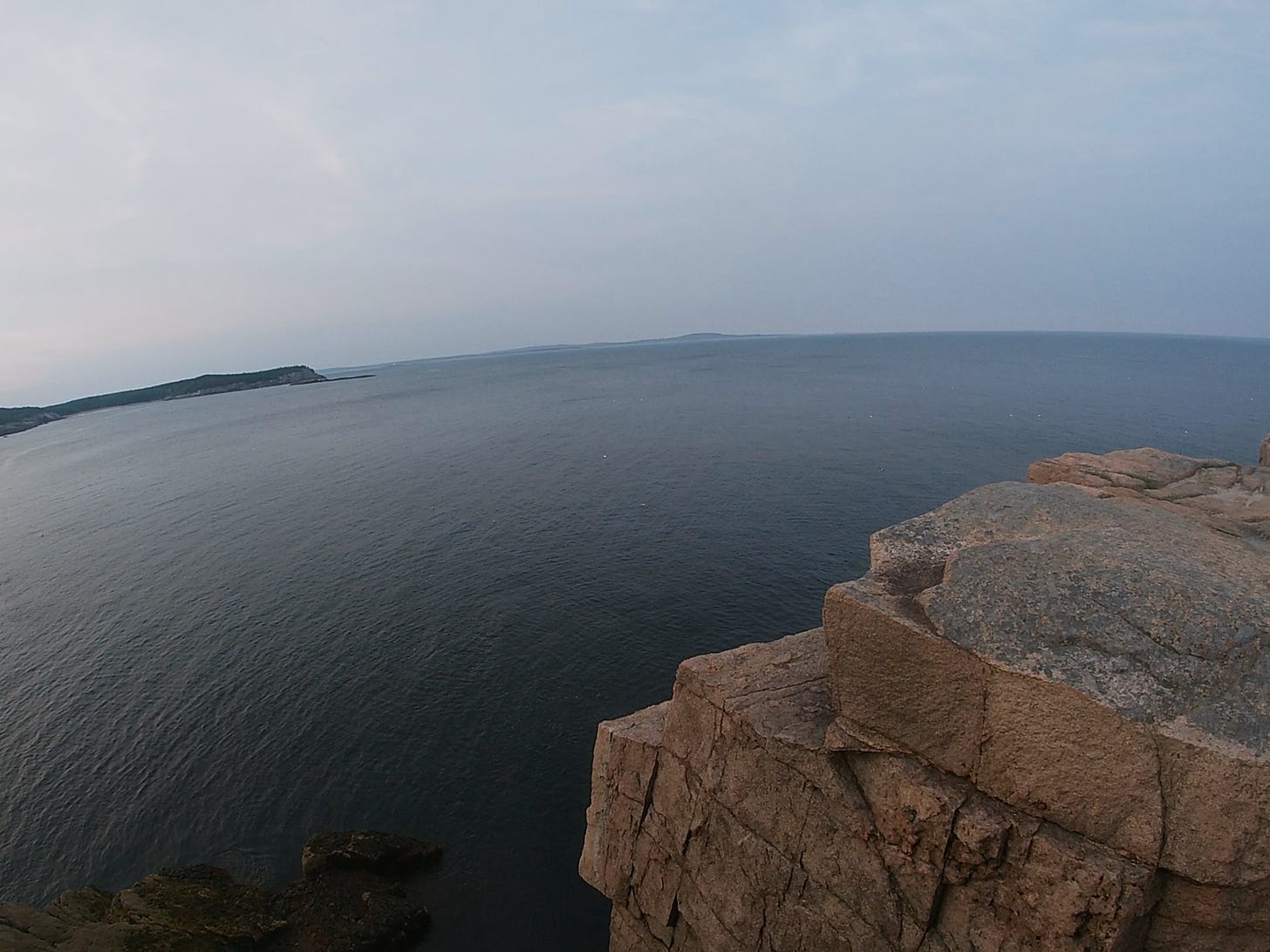Tabs Open #15: Not Because They Did Not Remember, But Because They Were Never Asked

Millions of years ago, oceanic sediments on the coast of Maine were squeezed and heated and crushed into massive formations of what is now known as Ellsworth Schist, a sort of rock that sparkles with bands of quartz. Volcanoes erupted throughout the area, forming barriers of igneous rock, and glacial ice advanced on it all and retreated time and time again. Where the igneous rock didn’t metamorphosize it weathered and cracked and crashed across the ages, leaving huge bluffs of granite to form the edge of the continent.
This painfully slow dance had consequences great and small. One that’s small in the span of all things but particularly large for me given how much I like being alive is that there are certain areas of Acadia National Park where the schist really dominates the landscape. Elsewhere in the park, like on the Otter Cliffs, steadier, sturdier granite abounds. My wife and I and a few other friends were fortunate enough to do some rappelling and climbing on those cliffs last weekend, a sunset experience that words don’t really do justice to. I was grateful for the granite, novice that I am; clinging to its face a few dozen feet off the ground while you poke around for a foothold really gives you a sense of its solidity.

All of this is to say that the way things are constructed really matters. Sometimes, like the cliffs, it’s a process of building that happens largely without our notice or understanding over spans of time too enormous for our little brains to comprehend. Others are a little more immediate: take baseball stadiums. The economic and sociological factors that led to the shift in building material from wood to steel and concrete in these stadiums caused ripples we’re still learning to reckon with today. There are all the lives saved by the reinforcement of bleachers and concourses; there are the carbon impacts of concrete and steel production, an unavoidable calculation; there are the New York Yankees. There is the home run derby, which is frankly a hell of a lot of fun. Billionaires sweet-talk city governments into cushy publicly financed stadium deals that screw vulnerable populations for decades.
Of course if we are to consider what we build, we also must consider what was built, past tense, and what remains when it’s gone. You’ve probably heard of the Donner Party, a story presented through the Western lens as one devoid of moral or lesson—a tragedy, plain and simple, one brought on by freak storms and hard luck and desperation. But the debris of the Donner Party cabins tells a different story. The storms and the hard luck and desperation are all real and true, of course. But amidst the archaeological wreckage, the blue-painted china and bullets and horseshoes, there was evidence of a second story. The dig crew that discovered the buried site where the party met its end found charred and splintered rabbit and deer bones among all the others, two animals no survivor reports mention that the party ever successfully hunted. Another group did, though: the wel mel ti (or Northern Washoe tribe) have long told stories of their attempts to bring rabbit meat and a deer carcass to the starving pioneers, efforts that were met with gunfire. The enormity of the choices the Donners were forced to make as a result of that choice is as incomprehensible as the span of time it took to build the cliffs of granite we dangled off last week.

The fate of the Donner Party is a sobering warning of the impermanence of things, even things we believe today we’ve built to last. It turns out that the internet is drowning as sea levels rise. If you’re like me you probably don’t think much about all the physical infrastructure required to make the internet work, but it requires it all the same. And now rising oceans are queuing up to swamp thousands of miles of cable and hardware upon which everything from hospital equipment to airports depend.
The things we make also make us us. And because of this they can also help unmake us.
Other ironies emerge. Sometimes things we haven’t had a hand in building at all outlast everything else. Take a nematode, recently discovered alive after 41,000 years frozen in the Canadian tundra’s permafrost. (What the Donner Party would’ve given, I’m sure, to have had such biological resilience!) Perhaps there’s a lesson in all this, primitive worms outlasting civilizations and charred animal bones outlasting our integral societal structures.
Lest I make the mistake of trying to be too profound in an email newsletter, let’s end on one last thing that I thought was built in a cool way. Like the internet’s physical infrastructure, I haven’t historically spent a lot of time thinking about gongs. But here’s a gong making some sounds I didn’t know a gong could make. Fascinating.
Thanks for reading! Take care of yourselves, and each other.
-Chuck



